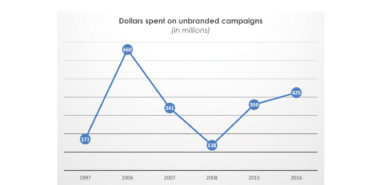I have been saying for years that people in the industry have seriously overstated the effect of power of payers. Companies (or their account managers) have been seriously overpaying for “access” for most products for many years. The few times in the past when payers tried to use their “power,” the market itself often pushed back—not responding in the way payers wanted. Hoping to avoid payer hostilities, many companies dutifully provided more price breaks in hopes payers would treat them kindly, even when the likelihood of any negative effect by payers was small.
In my discussions with payers over the years it was always apparent that they believed they had limited ability to really “move markets” to any great extent. They were content to take credit for cost savings by taking advantage of patent expirations on blockbuster drugs, while bemoaning the fact that in many high dollar categories—particularly MS and oncology—they were pretty helpless. Some played great games of bluff: One major payer informed companies with drugs on their third tier that without the provision of some discount, their products would be further disadvantaged when in fact, they didn’t intend to do anything to the products. The result: More than 50% of the companies responded with some price concessions and the guy who cooked up the idea got promoted.
Account managers have successfully overstated the effect and importance of payers for two reasons: First of all, they believe what their customers tell them and, more importantly, the more powerful the payers appear to be to senior management, the more important the account managers become—that’s prudent career management.
In the past few years some payers, especially pharmacy benefit manager (PBMs), have started to push to see if they really can do what they have threatened to, and in many cases it has worked. In categories with products that are relatively substitutable, some PBMs have pushed very hard. At first not much happened (for instance their heavy management of the topical testosterone market a few years ago was relatively lackluster and they backed off quickly). But as they tried it, more things began to stick.
Reluctant Acceptance of Payer Choices
Physicians and patients often simply gave up when faced with restrictions. They stopped fighting for their choice and began to accept the payers’ choices. The short acting insulin category was hit heavily by payers, who demanded and are getting bigger discounts in exchange for exclusive formulary position—and patients and physicians seem sanguine about switching from one to the other, even though they are not generically equivalent. The same has occurred in the anti-TNF category for RA and other autoimmune diseases, and they hit a home run with the Hepatitis C drugs in terms of their ability to control use and secure discounts.
This heavy handedness can only happen in markets with products that are easily interchanged, but payers’ comfort in identifying and expanding on those categories is improving. This means: In competitive categories, payer power will be stronger than ever before. As one payer put it, “It becomes a situation where…I mean, if we have four or five other products available in the class…if you put them all on, you are not managing anything. So, we have to have a sense that we are managing something.” This simply means that payers now feel comfortable in doing their jobs.
Will The Specialty Market Niches Shrink?
There are still categories, such as oncology, in which payers are not likely to push too hard, but they will be more aggressive in managing products to their labels and to assure that product use is in compliance with guidelines. For oncology, you can be assured that payers will be happy to deny payment for products when NCCN guidelines haven’t been followed. Products in these specialty markets, depending on their label, will find themselves in smaller niches.
In this new world of actual payer power, companies will need to do some things differently, and I believe that there are two things that are the most critical.
1. Understand that many products will be pushed into smaller niches than marketers want. Design your trials to help you understand just what those niches are and just how secure you can be within a niche. The benefit to this is that if you can find the patient group or groups in which you have the clearest advantage, it puts you into a position that could be very difficult to dislodge.
Trying to be all things to all people makes you vulnerable—finding the spot where you are the absolute best choice gives you power. Design your studies to help you identify your strongest position, then market and price for that position—not the one you wish you had. (By the way, this brings out an irony in that increased payer power may drive prices higher as companies seek and secure niches).
2. Really focus on managing rebates. PBMs, unlike traditional health insurers, live and die by their rebates. They use them in all kinds of ways and they will let you know that a big rebate is preferred to a low list price. This has brought about some severe problems, in that some firms in competitive markets have driven their list prices higher to enable them to pay even bigger rebates—their net prices haven’t increased because they gave it all back to PBMs. But patients, pharmacists, physicians and critics see the list prices, not the rebates or the net prices. This is a looming threat to pharmaceutical companies, and it will be interesting to see if companies will be willing to take the fall for PBMs, with their newfound power and influence.






